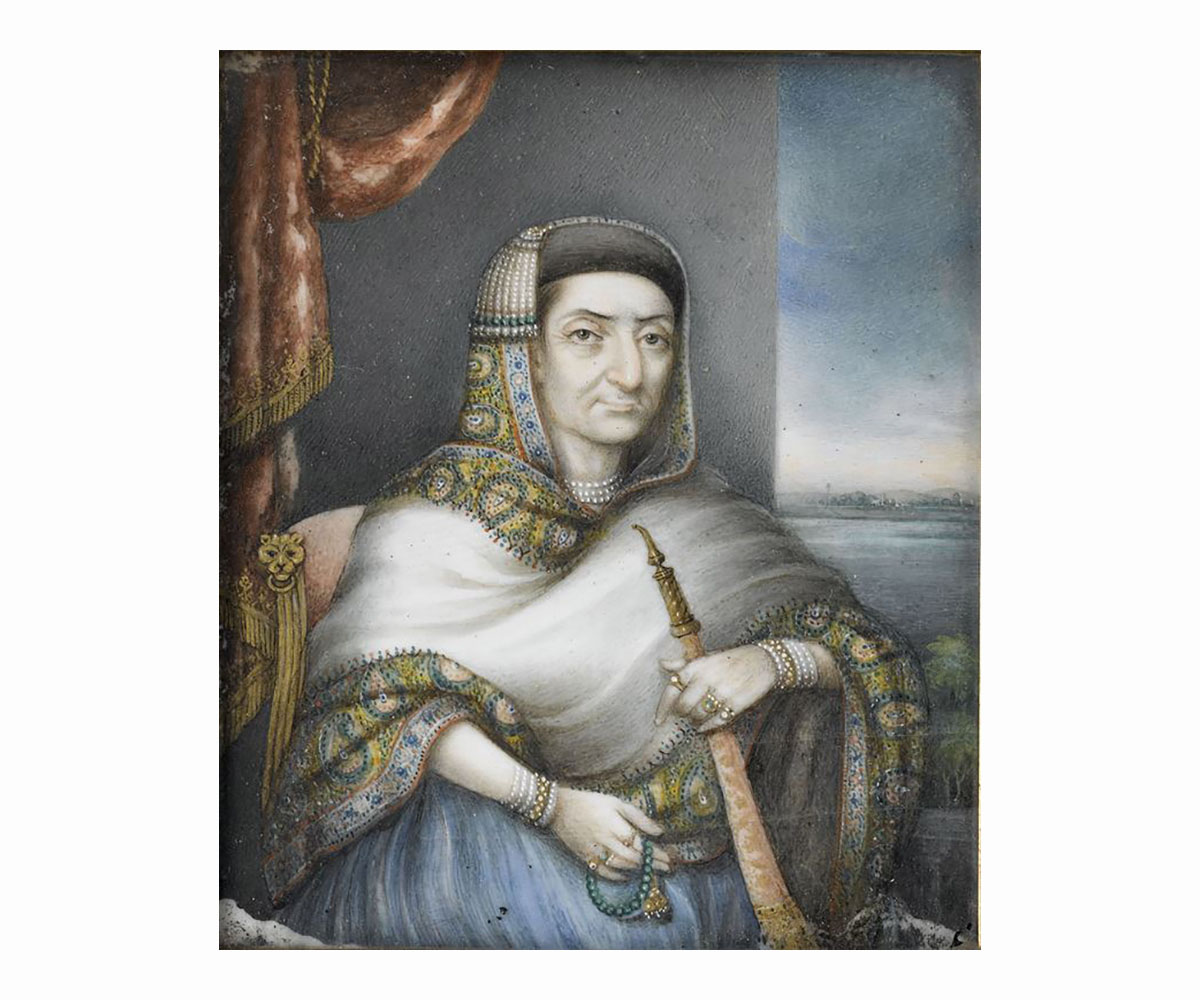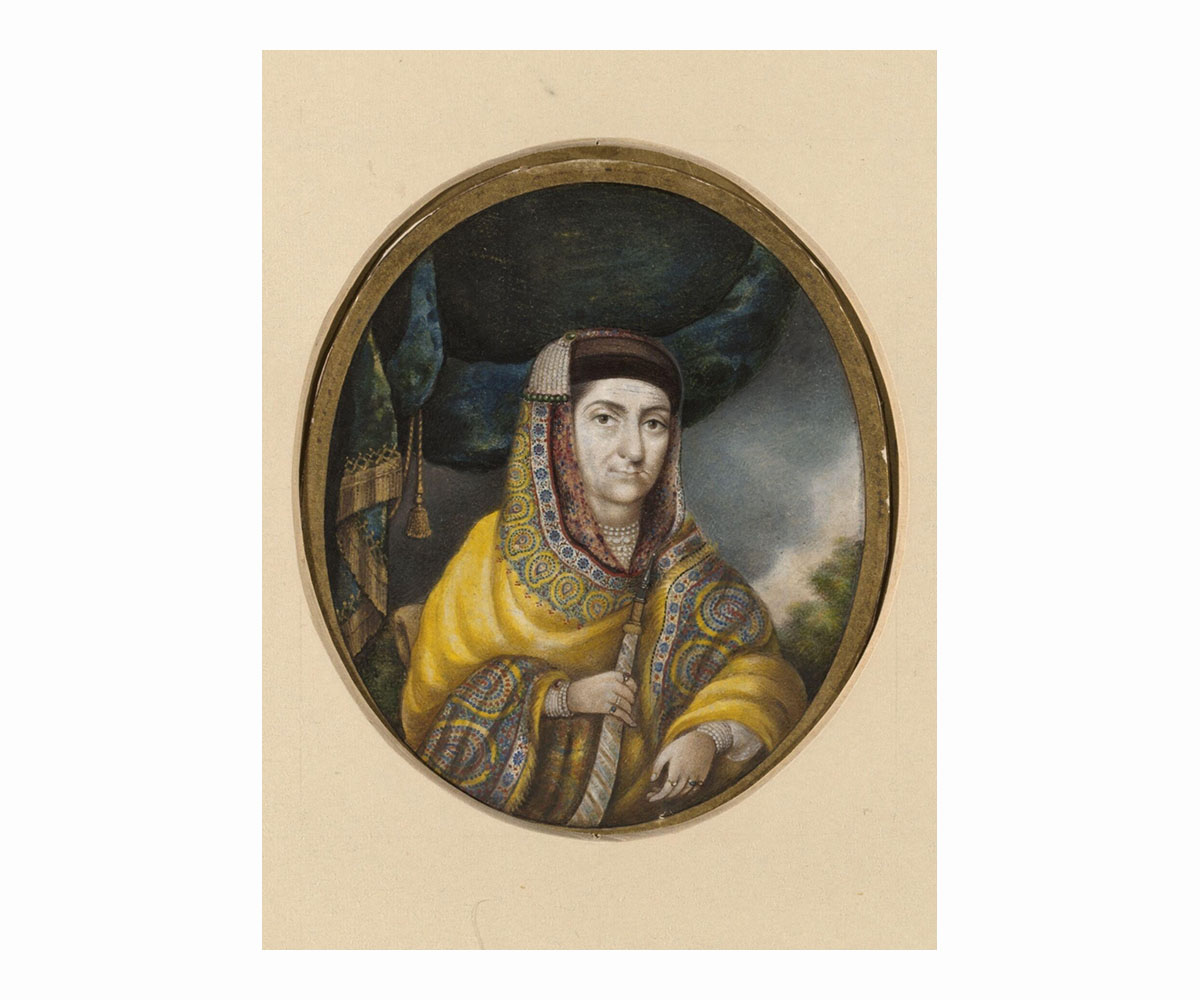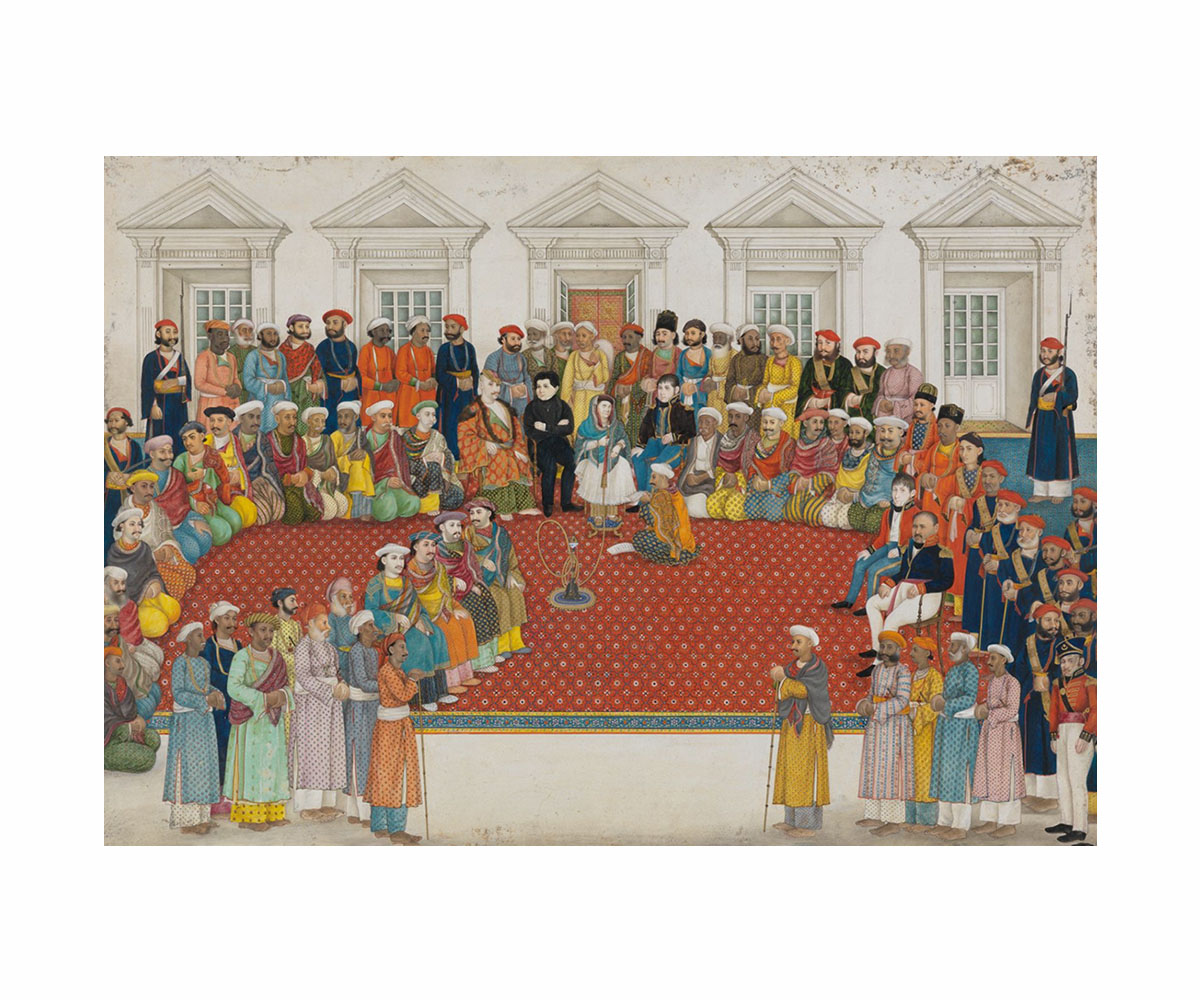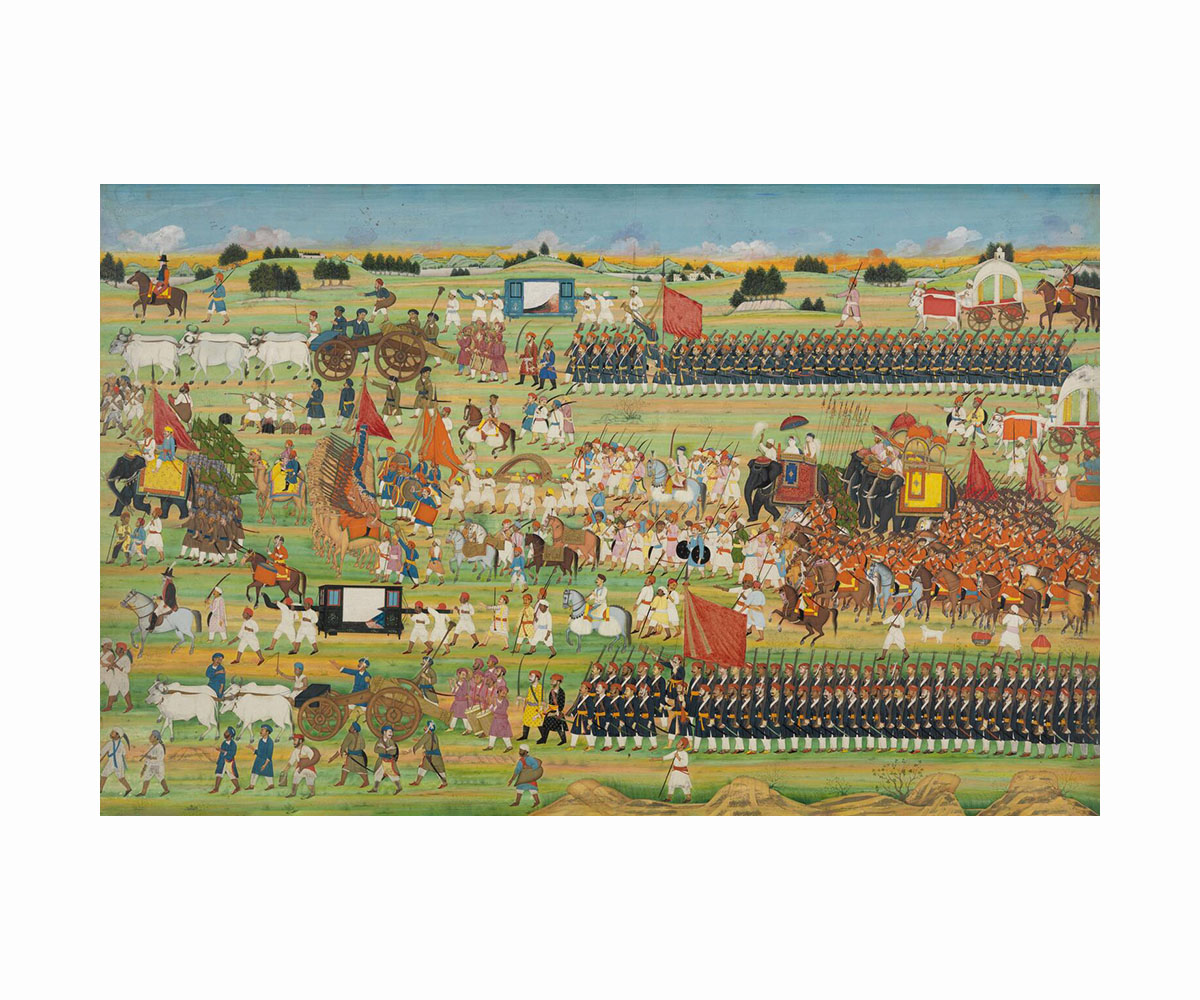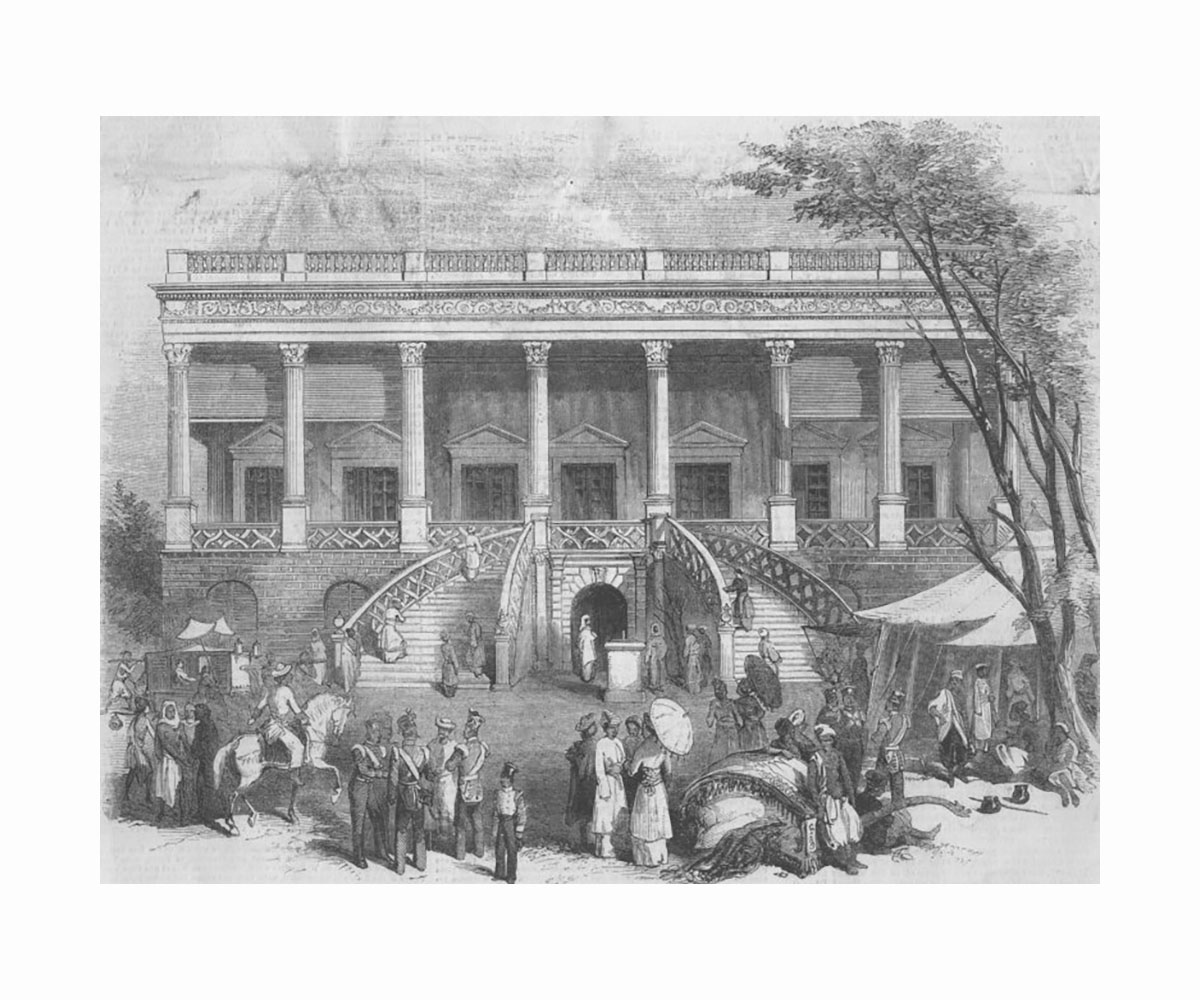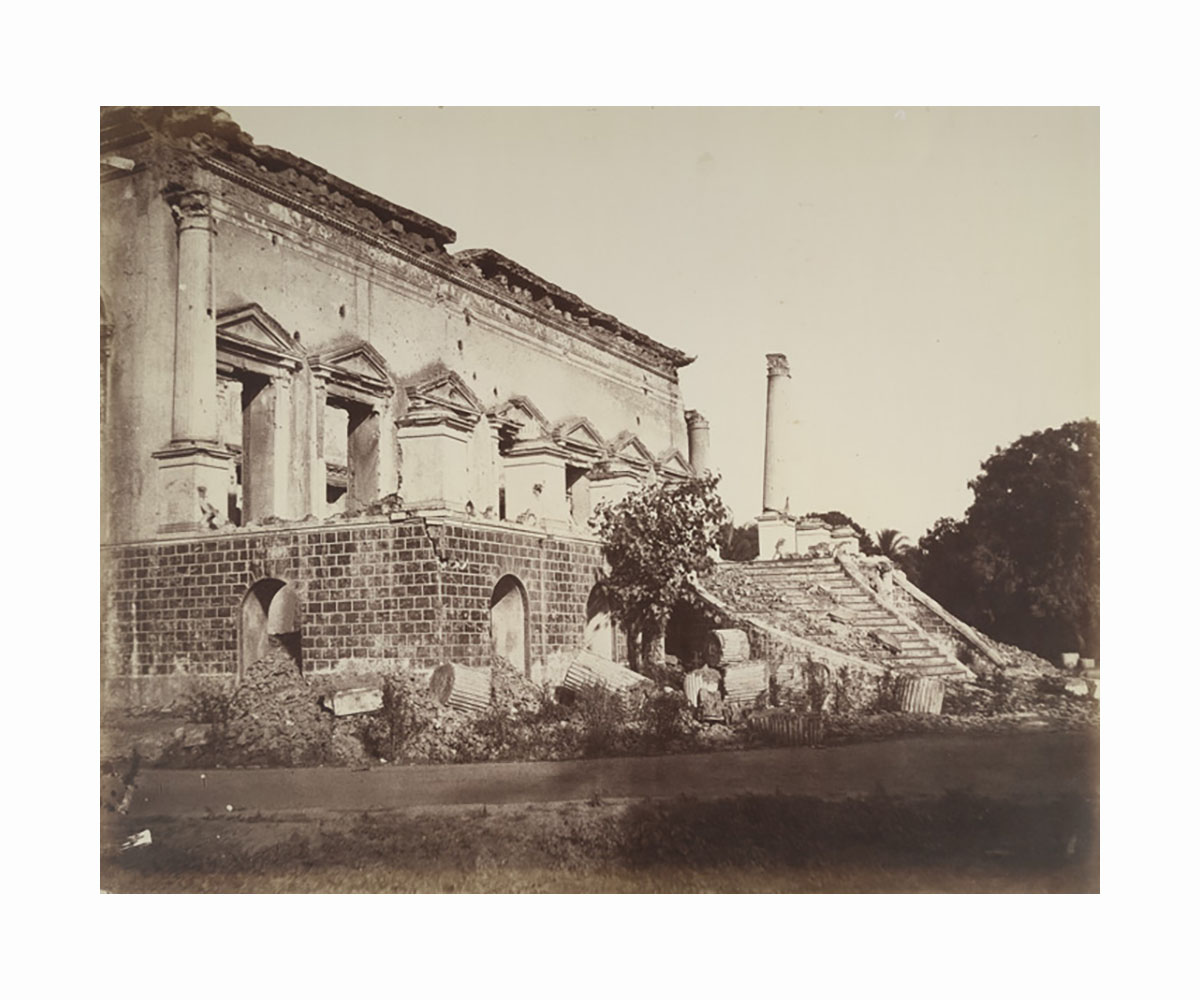PERSPECTIVES
The Courtesan Who Commanded an Army: Begum Samru
Amidst the socio-political upheavals in late eighteenth-century northern India, Farzana Zeb un-Nissa (1753–1836), a former courtesan, charted an extraordinary rise to power. Known as Begum Samru, she became the ruler of Sardhana, a territory near Meerut in present-day Uttar Pradesh, and the commander of 3000 troops.
During a time when the Mughal empire, independent local rulers and chieftains were engaging in continual internal conflicts and the British East India Company was steadily expanding its reach, she employed, what scholar Mrinalini Rajagopalan calls, ‘her arts of fascination’ to carve out a dominion for herself.
While there is no reliable record of her early life, it is likely that the Begum began her life as a member of an elite family that had fallen into hardship. Around the age of eleven or twelve, she became a courtesan and a performer of nautch, a traditional court dance popular during the rule of the Mughals and later, in the colonial period. At fourteen, she joined the harem of the forty-five year old European mercenary Walter Reinhardt Sombre, as a junior wife. Sombre had made his fortune by raising a private army that was hired out to the various North Indian kingdoms and principalities at war with one another.
Soon, she rose through the ranks of the harem to become a valued consort, eventually accompanying her husband on the battlefield, learning political and military strategy. After Reinhardt died, the young wife, now known as Begum Samru (derived from Sombre), inherited the independent territory of Sardhana which the Mughal emperor, Shah Alam II had granted her husband in 1772. In time, Begum Samru expanded Reinhardt’s principality in spatial reach and financial holdings, and led the army into several battles, going on to take the name Joanna Nobilis, after the legendary Joan of Arc, the French military leader and, and patron saint and saviour, after she converted to Christianity in 1781.
Depicted by painters in British India as a turban-wearing, hookah-smoking woman commanding a court and a mercenary army, the Begum was described by her contemporary, Sir Thomas Metcalfe, a British Resident at the Mughal court, as a woman “distinguished by abilities of no common order and a daring seldom possessed by her sex.”
He was not the only person to find her formidable; there are many legends surrounding the fascinating Begum, who was so unlike the other women of her times. One of the circulating myths imagined her as a witch with a magical cloak that could destroy enemies. Around this time, she was the commander of nine battalions, including an infantry and cavalry, and she positioned herself as a strategic mediator between the local rulers and the English. She also participated in several battles, and fought against the English in the Battle of the Assaye amidst the Second Anglo-Maratha War (1803–1805). Perhaps it was the image of a four-and-a-half feet tall woman diving headlong into battle with her army — as depicted in a painting of her riding an elephant with throngs of her cavalry, infantry and artillery — that gave fodder to the fantastical rumours that surrounded the Begum.
Other images of her also underscore the power she held over her estate. In an 1820 painting of her household by Muhammad A’zam titled “The Household of Begum Samru”, we see her holding court amongst nawabs, guests from the Mughal courts, her second European husband (on her right), Anglo-Indian officers in her army, and others. The artist positions the Begum at the centre of the painting, holding the hookah, an obvious signifier of her authority over this particular domain.
Rajagopalan points us towards the environment that the painting is set in, apparently a depiction of the Begum’s mansion in Delhi. The space is defined by a blend of European features such as a neoclassical façade, pilasters and pediments in tandem with the typical elements found in an Indian Muslim house, such as the zenana (women’s quarters) and the hammam (bathing rooms).
As Rajagopalan argues, the architectural style of Begum’s home dismantles and reimagines the traditional distinctions made between masculine and feminine spaces, domestic and political realms, and European and Indian decor, reflecting a cosmopolitan identity. Indeed, architecture was a key mechanism through which the Begum consolidated power in the fraught political climate of nineteenth-century India. Thus, architectural spaces — the Begum’s palaces in Jharsa (Gurugram), Sardhana and Chandni Chowk (Delhi) — also played an important role in solidifying her power and reputation in the fraught political climate of late eighteenth-mid nineteenth century northern India.
Thomas Bacon, a first lieutenant in the British East India Company, recalls the Begum’s invitation to her annual three-day fete at her grand palace in Sardhana.
“Her highness, the Begam Sumroo requests the honour of _____’s company at Sirdhana on Christmas Eve at the celebration of High mass and during the two following days, to nautch and a display of fireworks.”
From being a nautch-girl to hosting extravagant festivals featuring the same mode of entertainment, Begum Samru’s life clearly came full circle. Today, years after her death in 1836, her magnificent, sprawling home, the Bhagirath Palace, lies crumbling in old Delhi’s central market district, a mere glimpse of the legacy of one of the most powerful women in South Asian history.
Bibliography
Kaye, M.M. The Golden Calm: An English Lady’s Life in Moghul Delhi. New York: Viking Press, 1980.
Rajagopalan, Mrinalini. “Cosmopolitan Crossings: The Architecture of Begum Samrū.” Journal of the Society of Architectural Historians 77, no. 2 (2018): 168–85.




